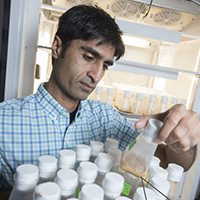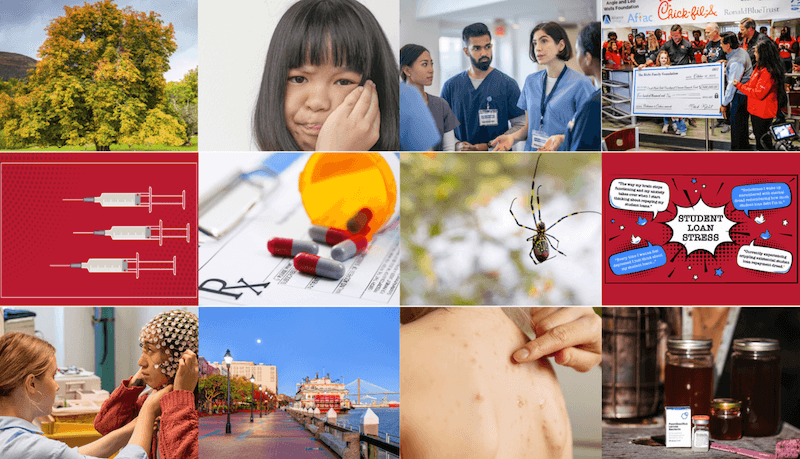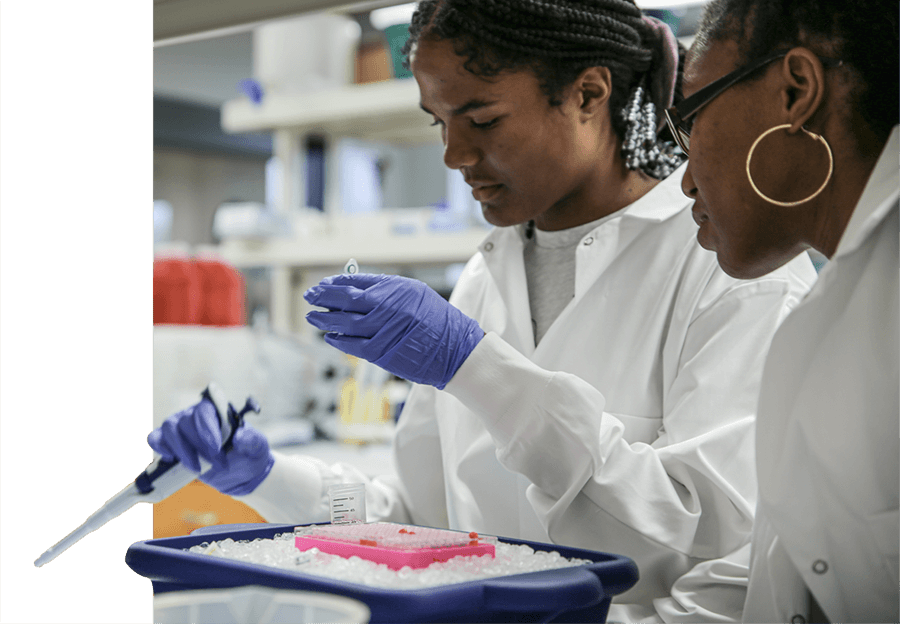The University of Georgia College of Agricultural and Environmental Sciences (CAES) has been awarded a $5.4 million grant by the U.S. Department of Agriculture’s National Institute of Food and Agriculture to develop long-term, sustainable methods for controlling the spotted wing drosophila (SWD).
Native to Asia, SWD is a tiny fly that was first detected in California in 2008 and has since emerged as a devastating pest of small and stone fruits throughout the U.S., valued at $5.8 billion in damage annually. It affects soft-skinned fruits such as blueberries, blackberries, raspberries, strawberries, cherries and others.
Blueberry entomologist and coordinator of the UGA Integrated Pest Management Program, Ashfaq Sial is leading a multistate team of researchers from 10 land-grant universities and the USDA to develop and implement long-term sustainable strategies to control SWD.
The pest has caused blueberry crop losses of up to 20% annually. Blueberries are Georgia’s top fruit crop and ninth-largest agricultural commodity with an estimated $300 million in value, according to UGA agricultural economists.
This project builds on previous work to develop control strategies in response to the crisis situation created after the detection and widespread distribution of this devastating invasive pest in all fruit-growing regions of the U.S. The team made substantial progress by refining monitoring tools, developing effective insecticide-based management programs, identifying effective cultural controls, and screening native and exotic biological control agents to address the drosophila invasion.
“The progress we’ve made is great, but SWD management is still highly insecticide dependent and is further challenged by secondary pest outbreaks, insecticide resistance and increased input costs,” explained Sial. “Because SWD has become established as a keystone pest throughout the U.S., it’s critical to develop more sustainable strategies to manage it.”
The goal of this new project is to pivot away from crisis response to build a long-term, integrated and systems-based approach to managing SWD. The team will work with region- and crop-specific teams of growers to implement best management programs, evaluate alternatives to insecticides, assess and reduce the risk of insecticide resistance development, and develop and disseminate actionable recommendations that enable producers to optimize pest management decisions for sustainable SWD management. They will also develop economically based decision aid tools to increase profitability and evaluate the impact of these initiatives.
The team aims to develop and deliver systems-based integrated management programs to berry and cherry growers that are cost effective and environmentally sustainable for long-term management of SWD in the U.S. Ultimately, implementing these solutions will directly contribute to the long-term profitability and sustainability of farms and farmers nationwide.
Joining Sial on this project is Kay Kelsey, a professor and evaluation expert in the CAES Department of Agricultural Leadership, Education and Communication. Other collaborators and their institutions include Hannah Burrack, North Carolina State University; Kent Daane, University of California Berkeley; Rufus Isaacs, Michigan State University; Greg Loeb and Miguel Gomez, Cornell University; Cesar Rodriguez-Saona, Rutgers University; Philip Fanning, University of Maine; Elizabeth Beers, Tobin Northfield, Karina Gallardo and Gwen Hoheisel, Washington State University; Vaughn Walton, Oregon State University; Joanna Chiu and Frank Zalom, University of California Davis; and Kim Hoelmer and Xingeng Wang, USDA Agricultural Research Service in Newark, Delaware.
To learn more on pest management strategies and research, visit site.extension.uga.edu/ipm.




.png)


